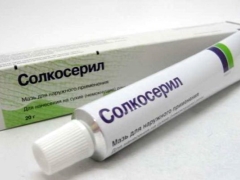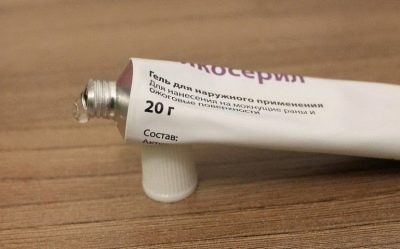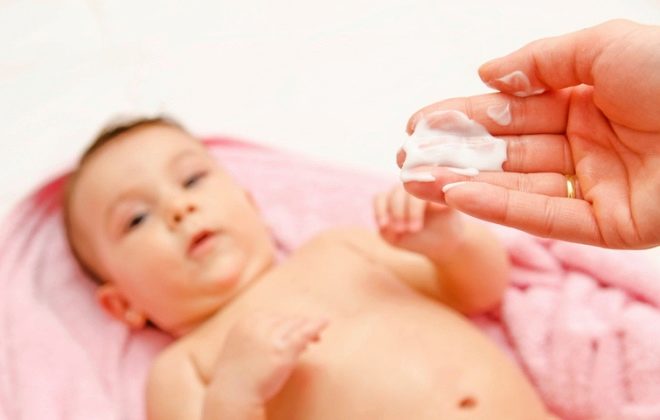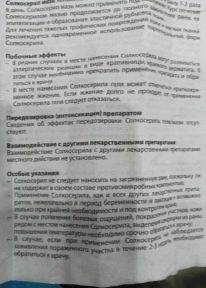Solcoseryl children: instructions for use
"Solcoseryl" is a medicine that can accelerate the healing of various injuries. Do children write it out? How does it affect the child's body?
Release form
"Solcoseryl" is presented in several forms:
- Ointment. This medication is a homogeneous, fatty substance of white color, sometimes with a slight yellowness. It smells like Vaseline and meat broth. One tube contains 20 g of ointment.
- Gel. Such "Solcoseryl" is a homogeneous transparent dense mass, which has no color, but there is an unexpressed smell of broth. Like ointment, this version of the medicine is sold in tubes containing 20 g of gel.
- Eye gel. This type of medication is a gel-like fluid that has no odor, but sometimes a slight, specific odor may be present. Most often, such "Solcoseryl" is colorless, but a slight yellow shade is the norm. In one tube is 5 g of gel.
- Dental adhesive paste. It has a uniform structure, a pleasant mint smell and a beige tint. Such paste is sold in tubes of 5 g.
In addition to local forms, "Solcoseryl" is also produced in ampoules - in the form of a solution for intramuscular / intravenous injections. This version of the drug is in demand for circulatory disorders, but is not used in patients under 18 years of age.
Composition
The main component of any form of "Solcoseryl" is dialysate (a substance obtained by dialysis) of blood of large cattle. For the production of the drug using the blood of young calves who still feed on milk. The amount of dialysate in different types of drug is different:
- 1 g of ointment - 2.07 mg;
- 1 g of gel for external use - 4.15 mg;
- 1 g of eye gel - 8.3 mg;
- 1 g of dental paste - 2.125 mg.
In the paste, in addition to dialysate, there is also the second active ingredient, which is polidocanol 600. Its dosage per 1 g of the drug is 10 mg. Auxiliary components in different forms of “Solcoseryl” are different. Among them, depending on the type of drug, you can see preservatives, gelatin, petrolatum, sorbitol and other substances.
Operating principle
Dialysate in the composition of "Solcoseryl" has a therapeutic effect, due to the low molecular weight components obtained from serum and blood cells of calves. It acts as a source of amino acids, nucleotides, glycoproteins, electrolytes, oligopeptides and other compounds. These substances are able to affect the metabolic processes in the cells and improve the oxygen supply.
The main effect of the drug is the activation of tissue repair, as a result of which they regenerate faster and their healing is accelerated. Due to the fat-based ointment, this form forms a protective film after skin treatment and prevents drying. The presence of carmellose sodium in the eye gel helps to evenly distribute the drug over the cornea and provides a longer lasting effect on the affected tissue.
Polydocanol 600, which is part of the paste, is a local anesthetic, since it quickly (within 2-5 minutes after treatment) and for a long period (up to 5 hours) eliminates pain in the oral cavity due to reversible blocking of nerve endings.
Other components of this form of “Solcoseryl” create a protective layer on the treated mucous membrane, similar to a medicinal dressing, protecting the affected area from chemical and mechanical effects for 3-5 hours.
Indications
Gel or ointment "Solcoseryl" is prescribed:
- for shallow cuts, abrasions and other minor skin lesions;
- with thermal or sunburns 1-2 degrees;
- frostbite;
- with bedsores and other long-healing wounds.
For the treatment of fresh wounds or weeping skin lesions, a gel should be used, and after drying and the appearance of granulations, it is recommended to switch to ointment. If the wound is dry, then “Solcoseryl” is initially used for treatment in the form of an ointment.
Eye gel is used for ulcers, injuries, burns and other lesions of the conjunctiva or cornea. Paste is used for aphthas, gums, gingivitis, stomatitis and other problems with the oral mucosa.
From what age is prescribed?
It is possible to lubricate the skin of the child with ointment or gel "Solcoseryl" at any age, but due to the risk of allergy, such drugs are rarely prescribed to children under one year old. The use of dental paste is possible from birth, and the eye gel is prescribed to one-year-old babies and older.
Contraindications
"Solcoseryl" can not be used only in case of hypersensitivity to any ingredient of the selected form of medication. If the child has a tendency to allergies, the use of the drug should be cautious.
Side effects
Burning may occur after smearing the gel on damaged skin. As a rule, it is short-term and no treatment is necessary. The same side effect can occur when using an eye gel, and the use of a paste sometimes affects the taste.
In addition, any of the forms of "Solcoseryl" can cause allergies, which requires the abolition of its use.
Application
Consider the instructions for use of the drug.
- "Solcoseryl" intended for external treatment is applied to the wound after cleaning it several times a day. The gel is used 2-3 times, ointment - 1-2 times.
- Eye gel drip into the conjunctival sac 3-4 times a day, one drop. In severe lesions, the frequency of use is increased to once per hour.
- Paste "Dent" is applied to the desired area up to 5 times a day with a finger or using a cotton swab. For one procedure, use a strip length of 5 mm.
- Treatment with any form of medication continues until complete healing.
Purchase and storage
The recipe for the acquisition of any form of "Solcoseryl" is not needed. The price of one tube of ointment or gel ranges from 200 to 350 rubles, the cost of a paste tube is about 400 rubles. Store drugs should be at room temperature in a place hidden from children. The shelf life of dental paste - 4 years, gel and ointment - 5 years, eye gel - 5 years, but after opening it is reduced to 1 month.
Reviews
On the use of drugs respond mostly well, calling it effective, easy to use and effective. Among the minuses are often noted its high cost.
Analogs
Similar to "Solcoseryl" medication is "Actovegin”, Which also acts due to the drawing of calves from the blood. It is produced in the form of a gel, solution for injections, cream, tablets and ointment. It is prescribed from birth for skin lesions, head injuries, hypoxia during childbirth, developmental delays and other problems.
Instead of “Solcoseryl”, other means that can affect the metabolic processes in tissues can also be used.
- «Methyluracil». This drug improves trophic processes and a positive effect on the immune system. In the form of an ointment, it is used to treat the skin from birth (including in infants), and tablets and suppositories are prescribed from the age of 3.
- «Viniline». This solution based on polyvinox not only accelerates the regeneration, but also has an antimicrobial effect, as well as envelops and reduces pain. It is used to treat bruises, injuries, open wounds and other skin problems. In addition, “Viniline” is discharged at angina, stomatitis, chickenpox and other diseases.
In children, it is used under the supervision of a doctor since 1 year.
- "Derinat". The basis of this drug is sodium deoxyribonucleinate, which has the properties to stimulate and regeneration processes, and immunity. The drug is prescribed to patients of any age for burns, skin infections, eye damage, ARVI and many other diseases. It is released in the spray and nasal drops.
- «Bepanten». Such an ointment and cream containing dexpanthenol helps to eliminate dryness, irritation or redness of the skin, and also stimulates the healing of minor lesions. It is prescribed at any age, even to a newborn child with diaper rash or prickly heat.
Review of the drug "Solcoseryl" see the following video.






























